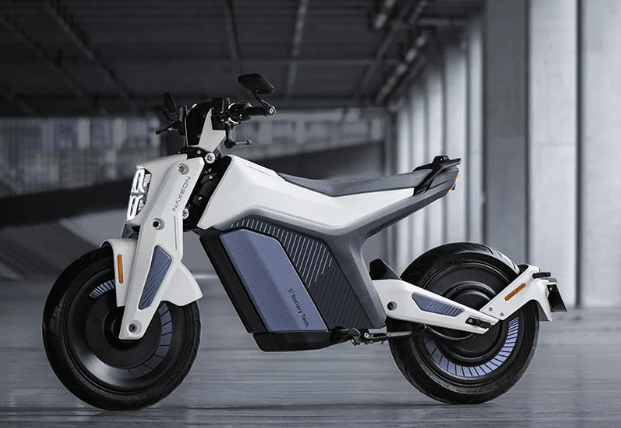Why Formula 1 Engines Are So Different from What’s Under Your Hood

Formula 1 engines are marvels of modern engineering — but how do they really compare to the engine in your everyday car?
If you’ve ever watched a Formula 1 race and marveled at the blistering speeds and precision handling, you’ve probably wondered: what kind of monster is under that hood? Spoiler alert — it’s not even remotely close to the powerplant in your daily driver. Let’s dive into the fascinating differences that make F1 engines so unique, and why that matters more than you might think.
The Basics: Everyday Engines vs. F1 Power Units
Most consumer vehicles today run on internal combustion engines (ICE), typically 4 to 6 cylinders, designed for longevity, fuel efficiency, and comfort. In contrast, modern F1 cars are powered by what’s called a hybrid power unit, which combines a 1.6-liter turbocharged V6 engine with advanced energy recovery systems (ERS).
While your car might top out at 6,000–7,000 RPM, an F1 engine screams all the way up to 15,000 RPM, producing over 1,000 horsepower in a vehicle that weighs less than a compact hatchback.
Materials & Design: Built for Speed and Sacrifice
The engine in your car is built to last 100,000+ miles. It’s made from sturdy, cost-effective materials like cast iron and aluminum. F1 engines, on the other hand, are built with exotic materials like titanium and carbon composites — all focused on weight reduction, heat resistance, and performance.
An average engine in an F1 car may only last 2–3 races before being replaced. It’s built to be pushed to the absolute limit — not to pick up groceries or cruise at 60 mph.
Energy Recovery: F1’s Futuristic Hybrid Tech
Hybrid cars like the Toyota Prius use regenerative braking to recover a small amount of energy. F1 takes that to the extreme. Each F1 engine includes two main recovery systems:
- MGU-K (Motor Generator Unit – Kinetic): recovers energy from braking.
- MGU-H (Motor Generator Unit – Heat): recovers energy from the turbo’s excess heat.
Together, they add around 160 additional horsepower and are managed with surgical precision by the driver and their team during each lap.
Cooling and Fuel Efficiency: Precision Over Convenience
F1 engines operate at temperatures above 1,000°C (1,832°F). Keeping them cool requires meticulously engineered radiators, liquid cooling systems, and careful airflow design.
But despite their raw power, F1 engines are also shockingly efficient — extracting more than 50% thermal efficiency, compared to around 30–35% in typical cars. That’s a big deal in a sport where every gram and drop of fuel counts.
Gearboxes & Transmission: Seamless and Lightning-Fast
Most everyday cars use automatic or manual transmissions with 5–8 gears. F1 cars? They use an 8-speed seamless shift gearbox, allowing drivers to change gears in as little as 0.005 seconds — almost unnoticeable. These gearboxes are operated via paddle shifters on the steering wheel, and every shift is calculated for maximum torque and traction.
Sound and Emotion: The Heartbeat of F1
Let’s be honest — the sound of an F1 engine at full throttle is enough to raise the hairs on your neck. It’s not just loud — it’s mechanical music. While your everyday engine is hushed to reduce cabin noise, F1 cars are designed to deliver raw, unfiltered energy. The roar of the engine isn’t a side effect — it’s part of the experience.
Why It Matters to Everyday Drivers
You might not be hitting apexes at 200 mph anytime soon, but many of the features found in today’s vehicles — from turbocharging and hybrid efficiency to paddle shifters and advanced materials — were born on the F1 circuit.
In fact, if you drive a modern sports car or luxury sedan, there’s a good chance you’re already benefiting from F1-inspired innovation. That’s the beauty of motorsport: it pushes boundaries that eventually improve the cars we drive every day.
Ready to See (and Hear) the Real Thing?
Nothing compares to experiencing F1 engines in action — especially in a place like Monaco, where the roar bounces off the yachts and cliffs like a symphony of speed. If you’re planning to see the action trackside, check out this Monaco Grand Prix trackside ticket option for an up-close view of the cars — and their engines — flying by.
Want to go even deeper into the F1 world? Explore the Monaco Grand Prix paddock experience for exclusive behind-the-scenes access, including pit lane views where you can get closer than ever to the technology we just explored.
Final Thoughts
Formula 1 engines are the result of decades of racing, innovation, and pushing machines to their absolute limits. While your daily commute might not demand 1,000 horsepower or an energy recovery system, every advancement in F1 trickles down in one form or another.
Next time you turn the key or press start on your car, think of how far engine technology has come — and where it’s going, thanks to the relentless drive of Formula 1.

How Reliable Data Extraction Improves BizBuySell Market Evaluation

Building Strong Data Protection Habits for Ontario Businesses

3 Proven Ways to Improve Employee Productivity at Your Business

Accelerating drug discovery through the DEL-ML-CS approach

AI in Marketing Is No Longer a Buzzword — It’s the Strategy

Affordable Fun: The Rise of Knock Off Honda Groms in the Mini Bike Scene

Ride Smart on a Budget: The Cheapest Street Legal Motorcycles That Deliver Value

Top Features That Make Gas Powered Mini Bikes for Sale Worth Every Dollar









